•Matching numbers example •Single family ownership for over 30 years •An older restoration to the highest standards •Service invoices on file •Mille Miglia Eligible It is an irony that, having been designed as a stripped-down affordable entry into Porsche ownership, the 356 Speedster is now by far the most valuable of the 356 family and the epitome of motoring 'cool'. The fact that relatively few were made (only 1,171 in 1957) has only served to enhance their collectibility. Although Ferdinand Porsche had established his automotive design consultancy in the early 1930s, his name would not appear on a car until 1949. When it did, it graced one of the all-time great sports cars: the Porsche 356. Having commenced manufacture with a short run of aluminium-bodied cars built at Gmünd, Porsche began volume production of the steel-bodied 356 coupe at its old base in Stuttgart. The work of Ferry Porsche, the 356 was based on the Volkswagen designed by his father. Like the immortal 'Beetle', the 356 employed a platform-type chassis with rear-mounted air-cooled engine and torsion bar all-independent suspension. In 1951 a works car finished first in the 1,100cc class at the Le Mans 24-Hour Race, thus beginning the marque's long and illustrious association with La Sarthe. Constant development saw the 356's engine enlarged first to 1.3 and then to 1.5 litres; the original split windscreen replaced by a one-piece; and a Porsche synchromesh gearbox adopted. A cabriolet followed hot on the heels of the original 356 coupé and then in 1952 a trial batch of 15 roadsters was constructed at the behest of US importer Max Hoffman, who had persuaded Porsche of the potential for a 'cut-price' entry-level model. The roadsters' successful reception in the USA led to the introduction of the Speedster model in 1954. The Speedster's inspiration is also credited to John Von Neumann, Porsche's West Coast distributor, who had chopped down a Gmünd-built coupé in the late 1940s to create a lightweight competition car. Explaining such a car's appeal Neumann once said: 'Guys want to go, on a Saturday night in June, down Sunset Boulevard with their elbow over the door and the girls can see them in the car.' Plus ça change... Instantly recognisable by virtue of its low, wraparound - as opposed to V-shaped - windscreen, smaller and entirely retractable hood, lower door waistline, horizontal trim strip at the level of the door handles, and twin bucket seats - all of which served to emphasise its sporting image - the Speedster was, in effect, an 'economy' model intended to compete with the cheaper British sports cars. The Speedster was powered initially by the 1.5-litre version of Porsche's horizontally opposed four, gaining the new 1.6-litre, 60bhp engine with the introduction of the improved 356A for 1955. Priced at $2,995, the Speedster was the lightest of the 356s, enjoying a commensurate performance boost that meant over 160km/h was possible. Allied to its already renowned handling characteristics, this meant that the Speedster was an instant success in the burgeoning American sports car racing scene. Testing the Speedster alongside its Coupé sibling in 1956, Road & Track magazine declared, 'A more comfortable sports car for long, high-speed journeys would be very hard to find and certainly no other car achieves the combination of comfort, performance and fuel economy of the Porsche Continental Speedster or Coupé.' Its combination of style, performance, and value for money made the Speedster deservedly popular; 4,822 examples were constructed between 1954 and '58, though this was far less than the number of Coupés built. Today this most handsome of the 356 variants enjoys iconic status. This example comes with a Porsche Certificate of Authenticity (dated 1995) confirming its original specification and items of optional equipment: USA bumpers, sealed-beam headlights, and Coupé seats. Originally finished in Meissen Blue, the car was refinished in black during its no
•Matching numbers example •Single family ownership for over 30 years •An older restoration to the highest standards •Service invoices on file •Mille Miglia Eligible It is an irony that, having been designed as a stripped-down affordable entry into Porsche ownership, the 356 Speedster is now by far the most valuable of the 356 family and the epitome of motoring 'cool'. The fact that relatively few were made (only 1,171 in 1957) has only served to enhance their collectibility. Although Ferdinand Porsche had established his automotive design consultancy in the early 1930s, his name would not appear on a car until 1949. When it did, it graced one of the all-time great sports cars: the Porsche 356. Having commenced manufacture with a short run of aluminium-bodied cars built at Gmünd, Porsche began volume production of the steel-bodied 356 coupe at its old base in Stuttgart. The work of Ferry Porsche, the 356 was based on the Volkswagen designed by his father. Like the immortal 'Beetle', the 356 employed a platform-type chassis with rear-mounted air-cooled engine and torsion bar all-independent suspension. In 1951 a works car finished first in the 1,100cc class at the Le Mans 24-Hour Race, thus beginning the marque's long and illustrious association with La Sarthe. Constant development saw the 356's engine enlarged first to 1.3 and then to 1.5 litres; the original split windscreen replaced by a one-piece; and a Porsche synchromesh gearbox adopted. A cabriolet followed hot on the heels of the original 356 coupé and then in 1952 a trial batch of 15 roadsters was constructed at the behest of US importer Max Hoffman, who had persuaded Porsche of the potential for a 'cut-price' entry-level model. The roadsters' successful reception in the USA led to the introduction of the Speedster model in 1954. The Speedster's inspiration is also credited to John Von Neumann, Porsche's West Coast distributor, who had chopped down a Gmünd-built coupé in the late 1940s to create a lightweight competition car. Explaining such a car's appeal Neumann once said: 'Guys want to go, on a Saturday night in June, down Sunset Boulevard with their elbow over the door and the girls can see them in the car.' Plus ça change... Instantly recognisable by virtue of its low, wraparound - as opposed to V-shaped - windscreen, smaller and entirely retractable hood, lower door waistline, horizontal trim strip at the level of the door handles, and twin bucket seats - all of which served to emphasise its sporting image - the Speedster was, in effect, an 'economy' model intended to compete with the cheaper British sports cars. The Speedster was powered initially by the 1.5-litre version of Porsche's horizontally opposed four, gaining the new 1.6-litre, 60bhp engine with the introduction of the improved 356A for 1955. Priced at $2,995, the Speedster was the lightest of the 356s, enjoying a commensurate performance boost that meant over 160km/h was possible. Allied to its already renowned handling characteristics, this meant that the Speedster was an instant success in the burgeoning American sports car racing scene. Testing the Speedster alongside its Coupé sibling in 1956, Road & Track magazine declared, 'A more comfortable sports car for long, high-speed journeys would be very hard to find and certainly no other car achieves the combination of comfort, performance and fuel economy of the Porsche Continental Speedster or Coupé.' Its combination of style, performance, and value for money made the Speedster deservedly popular; 4,822 examples were constructed between 1954 and '58, though this was far less than the number of Coupés built. Today this most handsome of the 356 variants enjoys iconic status. This example comes with a Porsche Certificate of Authenticity (dated 1995) confirming its original specification and items of optional equipment: USA bumpers, sealed-beam headlights, and Coupé seats. Originally finished in Meissen Blue, the car was refinished in black during its no





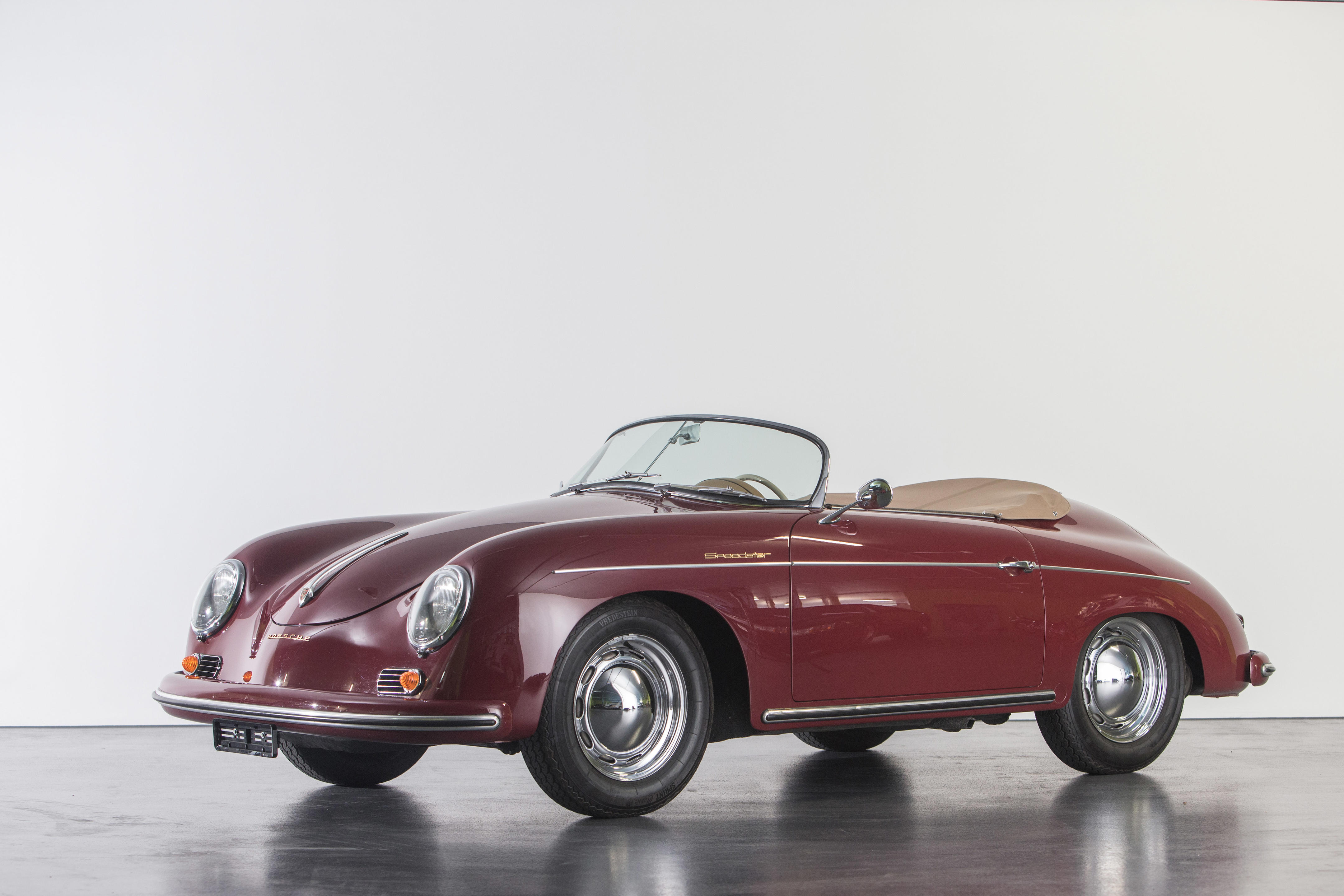


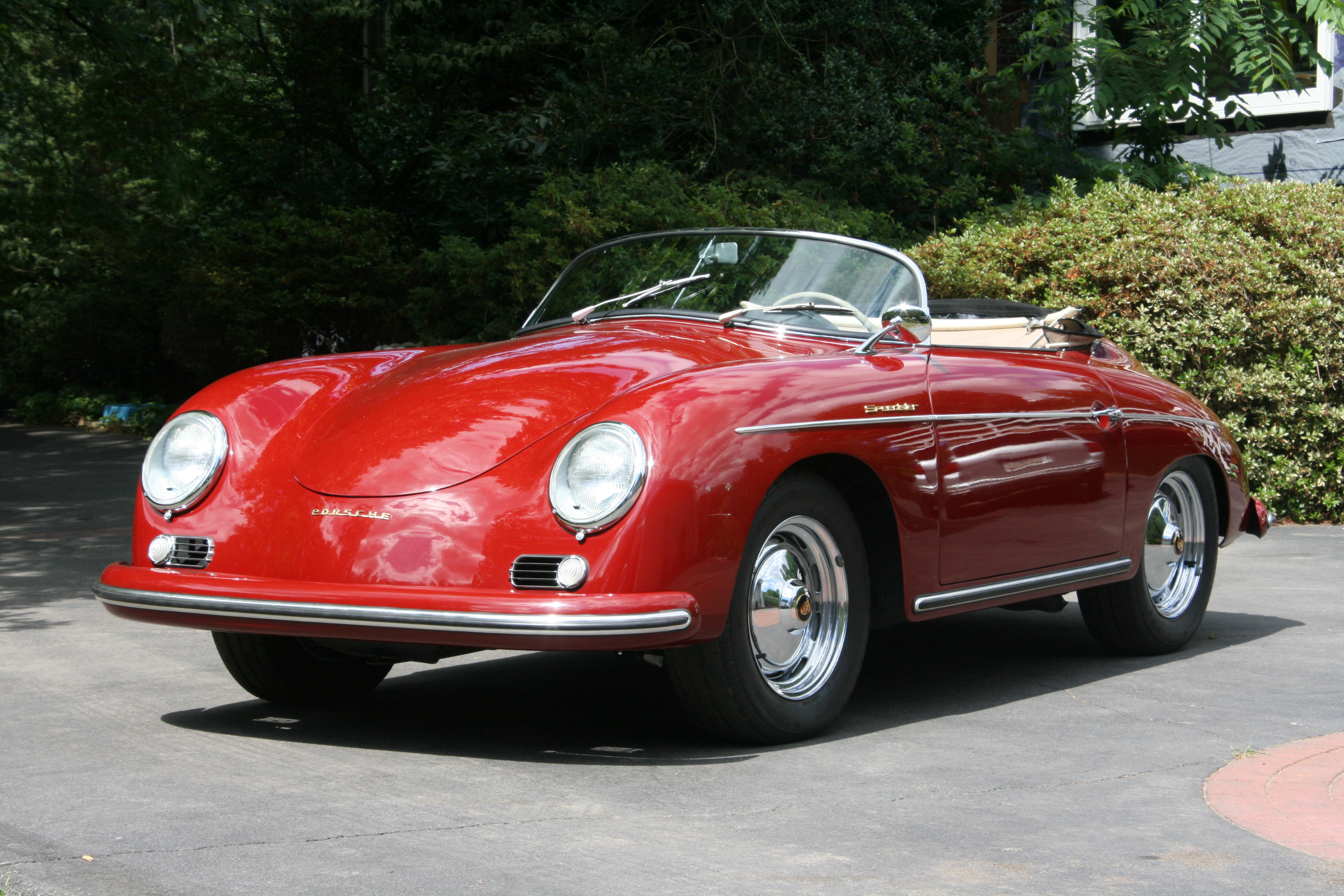
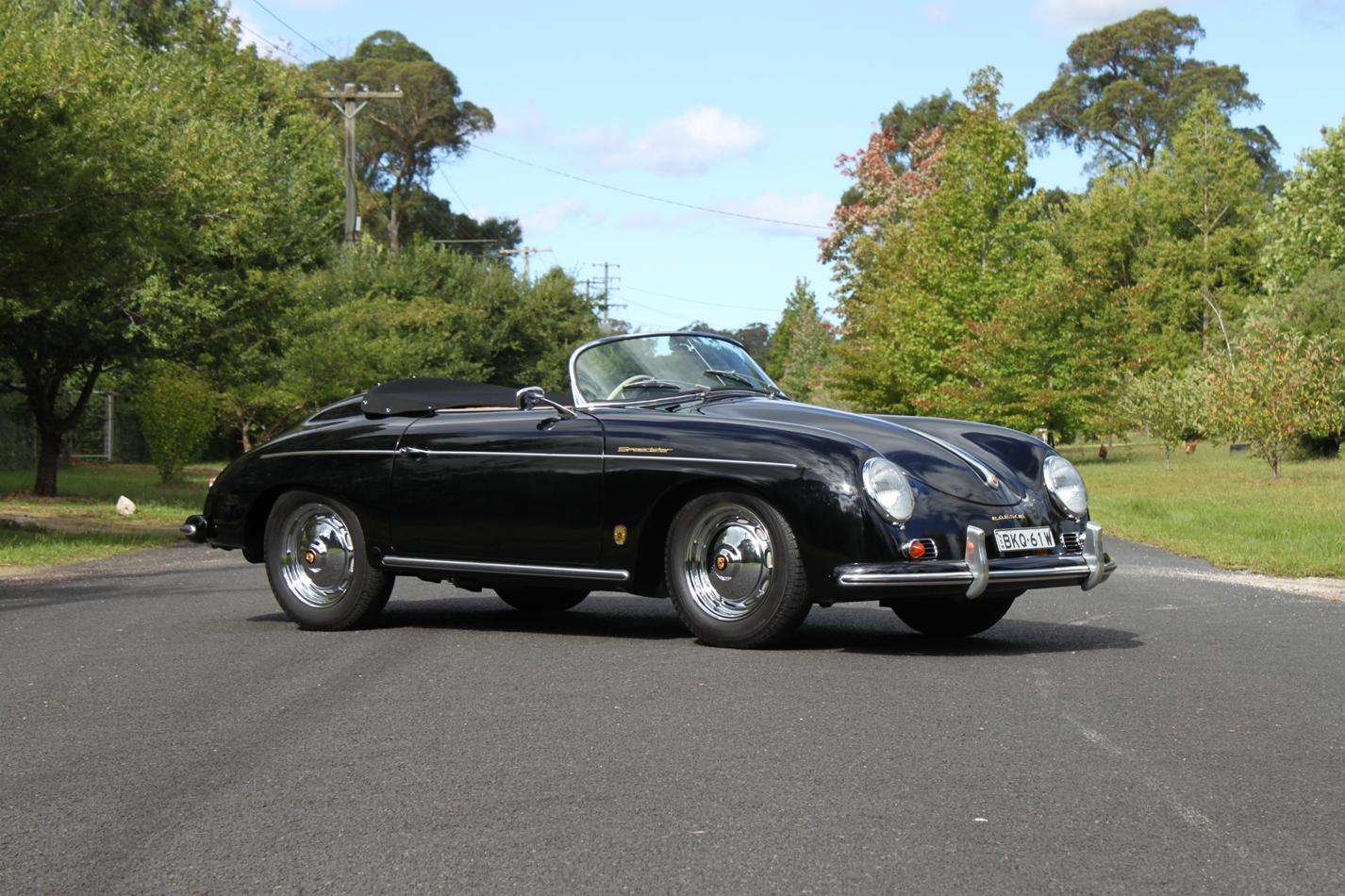


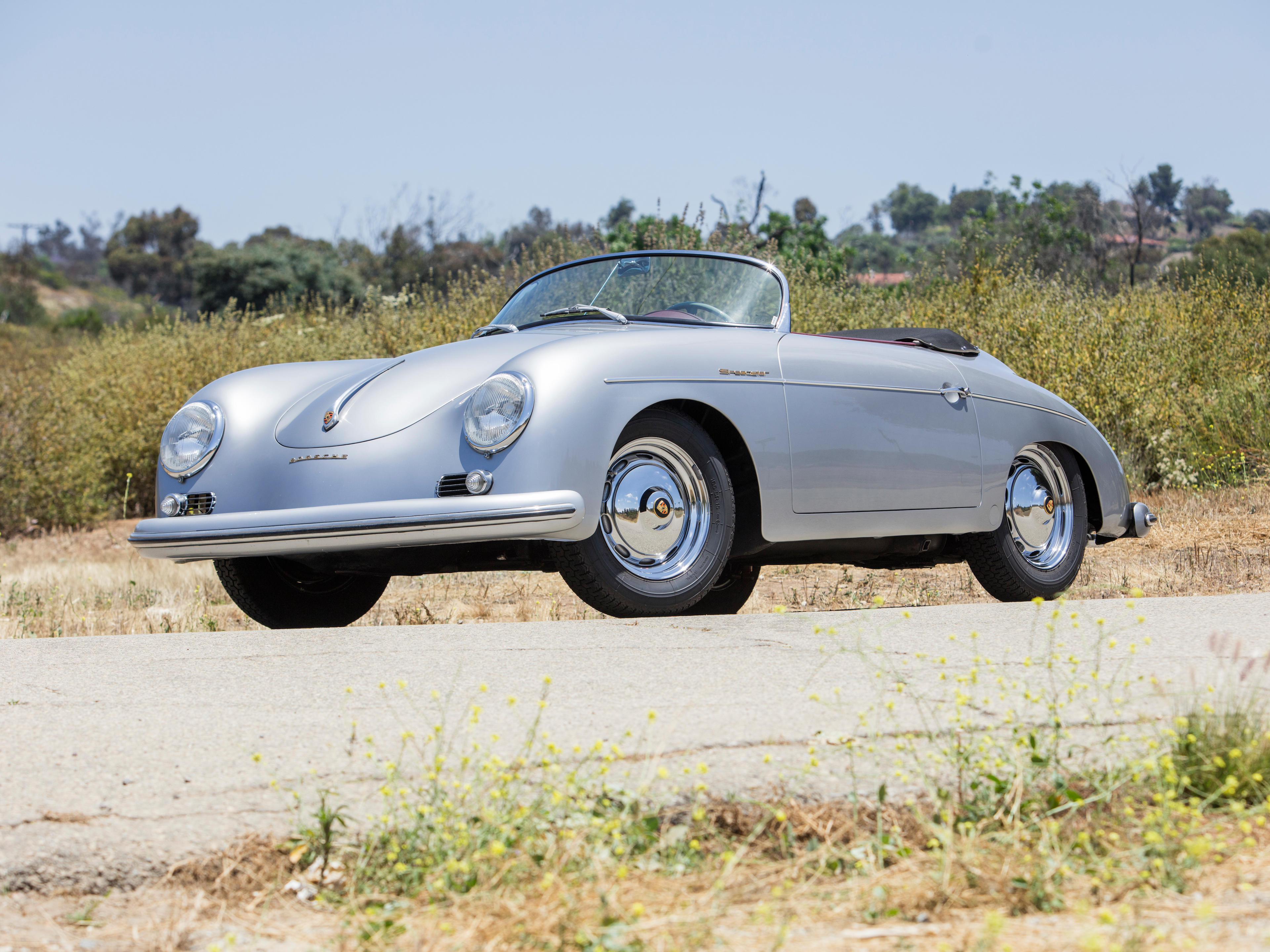
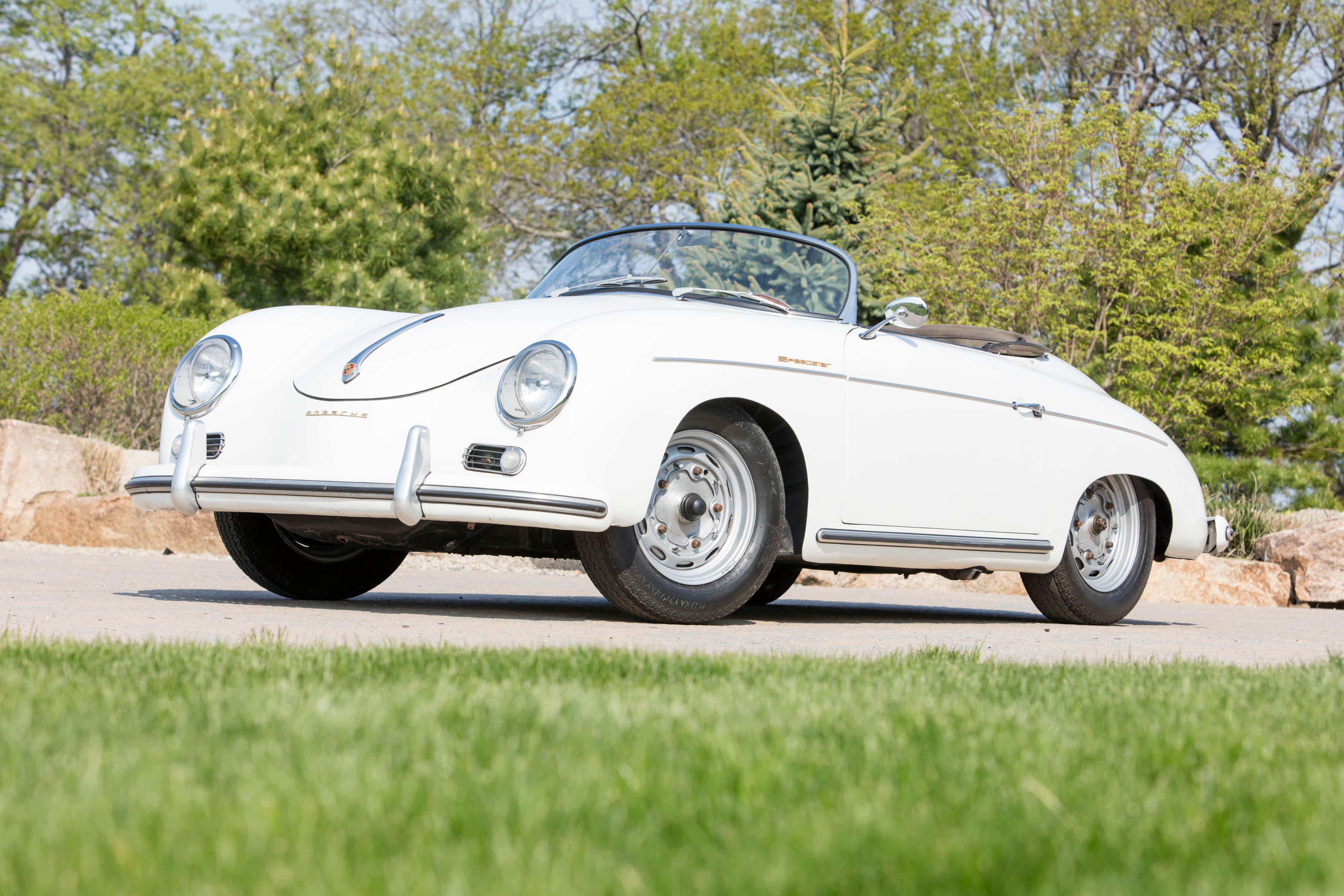
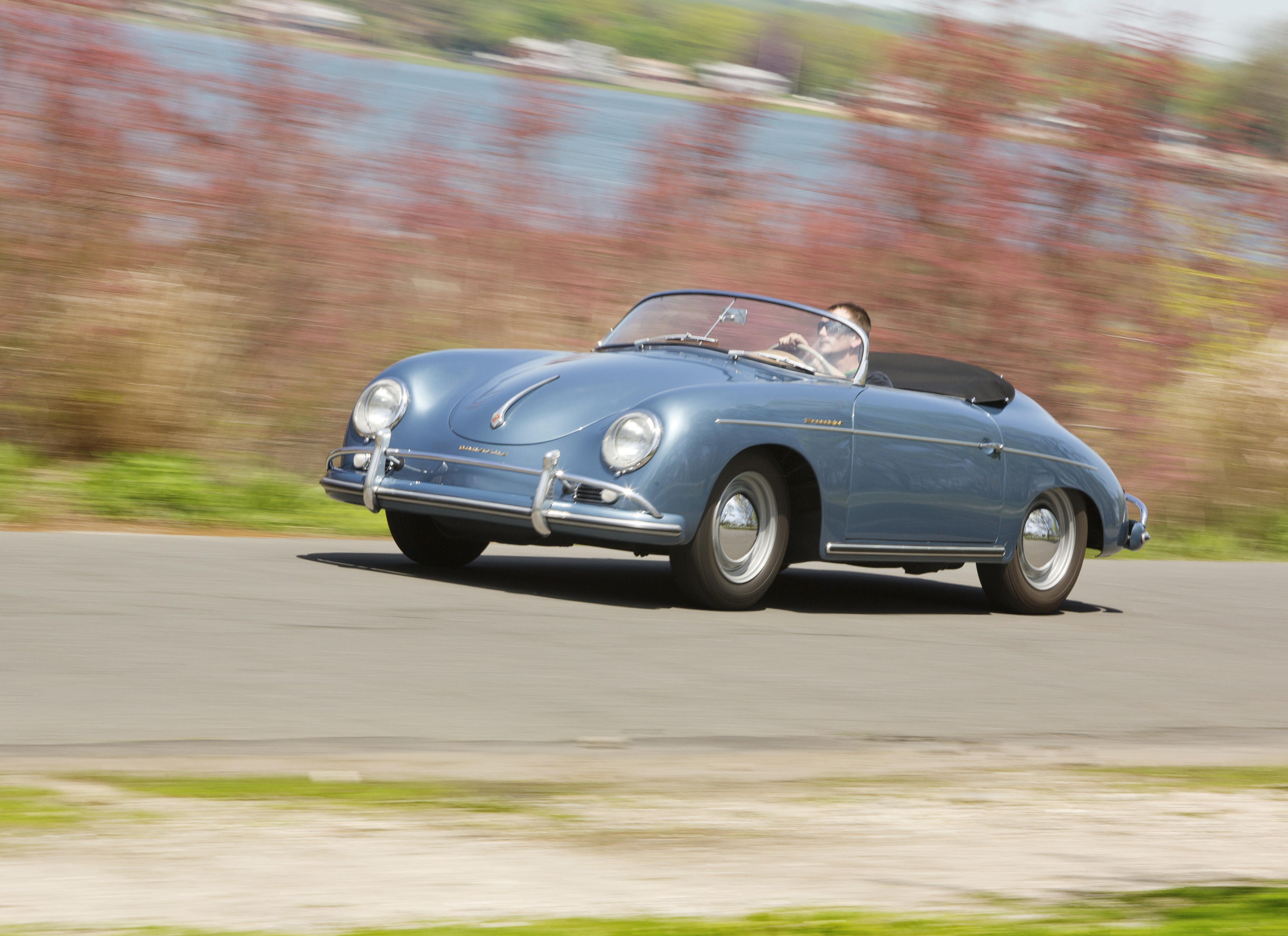
Testen Sie LotSearch und seine Premium-Features 7 Tage - ohne Kosten!
Lassen Sie sich automatisch über neue Objekte in kommenden Auktionen benachrichtigen.
Suchauftrag anlegen